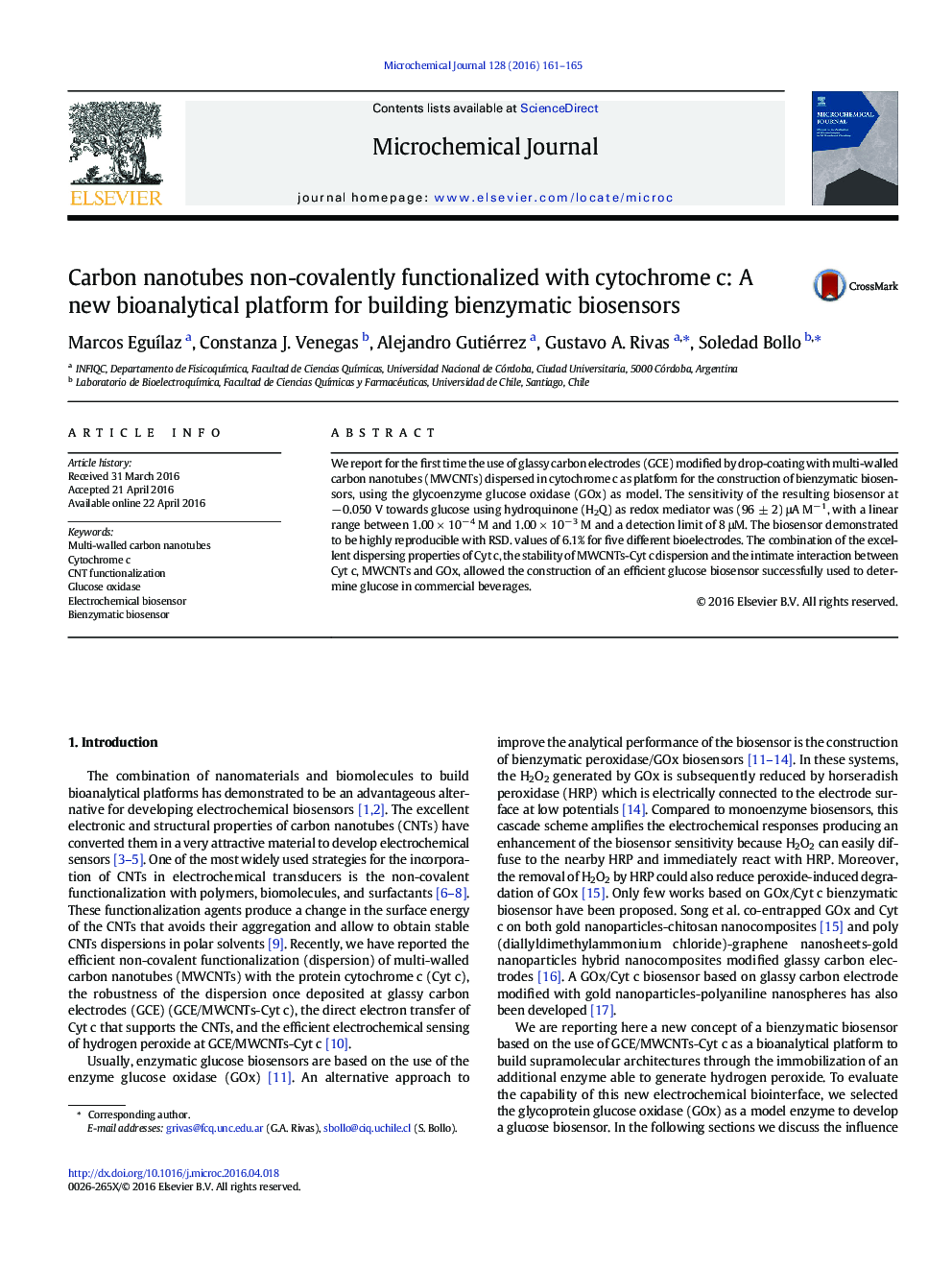| Article ID | Journal | Published Year | Pages | File Type |
|---|---|---|---|---|
| 1227554 | Microchemical Journal | 2016 | 5 Pages |
•GCE/MWCNTs-Cyt c was successfully used as bioanalytical platform to design a bienzymatic biosensor.•The intimate interaction of Cyt c with MWCNTs and GOx facilitates the biocatalytic detection of glucose.•The use of hydroquinone as redox mediator allowed the sensitive quantification of glucose.•GCE/MWCNTs-Cyt c/GOx/Naf was successfully used for the quantification of glucose in real samples.
We report for the first time the use of glassy carbon electrodes (GCE) modified by drop-coating with multi-walled carbon nanotubes (MWCNTs) dispersed in cytochrome c as platform for the construction of bienzymatic biosensors, using the glycoenzyme glucose oxidase (GOx) as model. The sensitivity of the resulting biosensor at − 0.050 V towards glucose using hydroquinone (H2Q) as redox mediator was (96 ± 2) μA M− 1, with a linear range between 1.00 × 10− 4 M and 1.00 × 10− 3 M and a detection limit of 8 μM. The biosensor demonstrated to be highly reproducible with RSD. values of 6.1% for five different bioelectrodes. The combination of the excellent dispersing properties of Cyt c, the stability of MWCNTs-Cyt c dispersion and the intimate interaction between Cyt c, MWCNTs and GOx, allowed the construction of an efficient glucose biosensor successfully used to determine glucose in commercial beverages.
